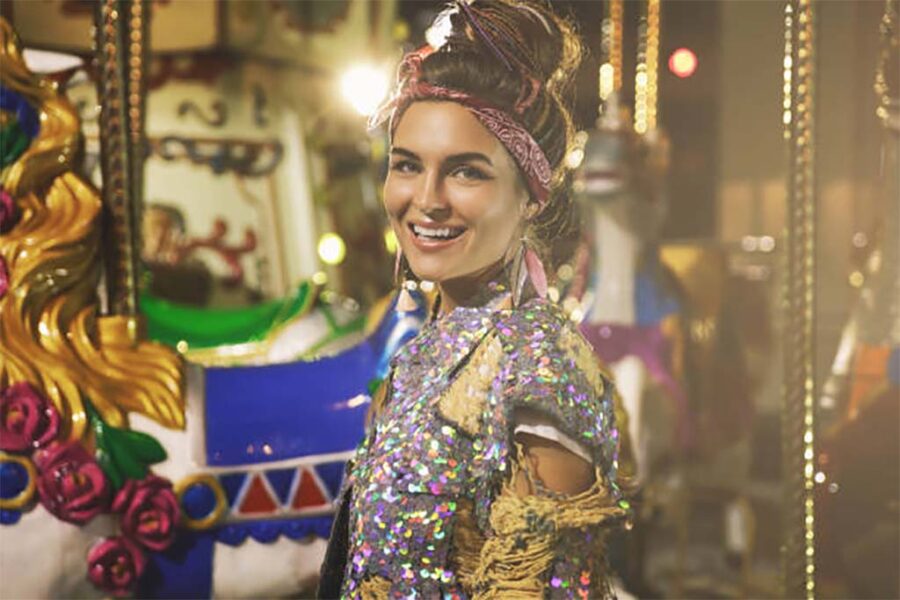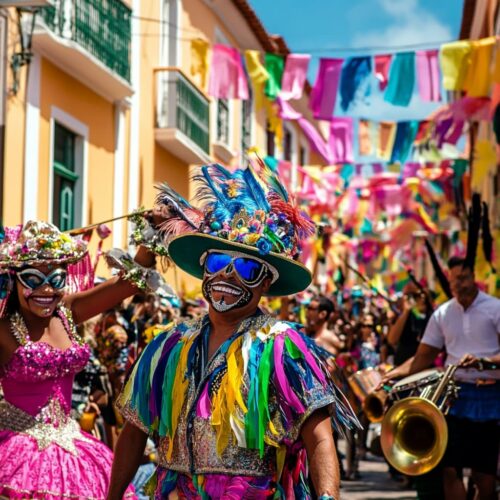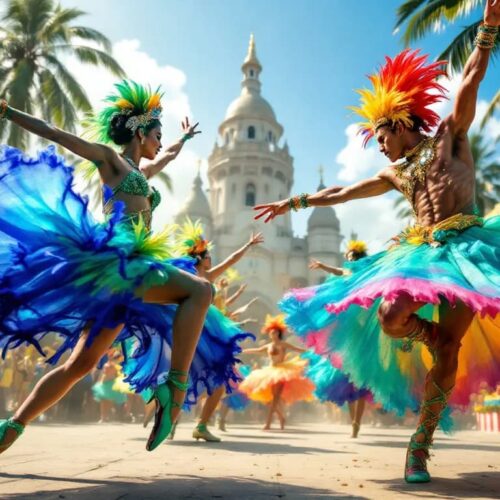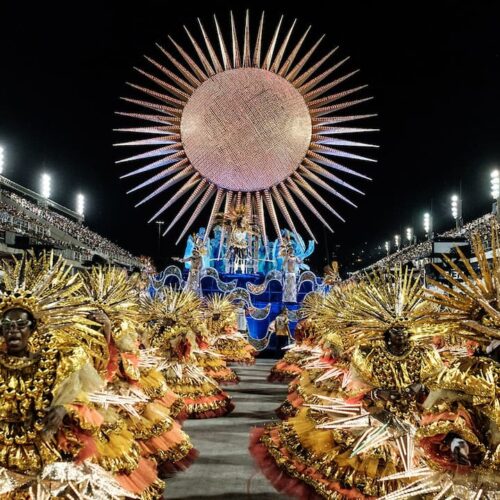Carnivals around the world stand as joyous occasions that bring together communities, families, and tourists. But beyond the festivities, the real value of these events lies in their history and meaning. Every dance step, every song lyric, and even the vibrant colors of the costumes, often reflect deep-rooted traditions. Many of these events can trace their origins back to religious rituals, while others began as seasonal festivals to mark bountiful harvests or to ward off bad spirits. With time, these celebrations evolved, incorporating various elements from different cultures and eras. When one starts to understand the origins and the stories behind these events, the experience of participating or even just watching these carnivals becomes richer and more profound. The laughter, the music, and the dances suddenly hold deeper meanings, revealing a tapestry of human experiences and stories waiting to be told.

The Story of Rio Carnival
When it comes to global celebrations, Brazil’s Rio Carnival undoubtedly makes its mark. This event, known for its grandeur, is not just a modern festivity. It’s a historical pageant that speaks volumes about Brazil’s cultural evolution. While today we see participants dancing to the electrifying beats of samba, the carnival’s roots are much more diverse. The event has origins in ancient European pagan festivals, which found their way to Brazil through Portuguese colonizers. Over time, these traditions mingled with indigenous practices and African influences, brought by the enslaved people. This unique blend has given rise to a carnival that, today, stands as a symbol of Brazil’s diverse cultural fabric. As participants parade down the streets, what we’re witnessing isn’t just a party; it’s a vibrant storytelling session that narrates Brazil’s multifaceted history.
Masks and Secrets of Venice Carnival
Italy’s Venice Carnival is another spectacle that captivates the imagination of many. The city, with its historic canals and grand architecture, becomes even more enchanting during this event. Central to this carnival are the intricate masks that participants don. But these masks are not just accessories; they have a tale of their own. In ancient Venice, these masks were tools of equality. By wearing them, the identity of the person underneath was concealed, allowing everyone, whether noble or commoner, to celebrate side by side. It was a brief moment of freedom in a society structured on hierarchy. Today, while the tradition continues, these masks also serve as a testament to Venice’s rich history and the love for artistry and craftsmanship. The carnival, with its masquerade balls and gondola processions, is a living reminder of a Venice from another era.
Calypso Beats of Trinidad and Tobago
The islands of Trinidad and Tobago offer a carnival experience that’s rooted in music, particularly Calypso. This genre, characterized by its catchy rhythms and insightful lyrics, serves as the heartbeat of the carnival. Historically, Calypso was more than just music. It was a voice for the people, a means to communicate stories, relay news, and even protest injustices. During the colonial period, enslaved Africans used this medium to express their pain, hopes, and dreams. The carnival became an avenue for this expression, a space where through music and dance, a community could come together, remember their history, and look forward to a brighter future. Today, the carnival in Trinidad and Tobago remains a significant event, with Calypso maintaining its position as a storyteller, chronicling the islands’ journey, challenges, and aspirations.
The Vibrant Essence of Mardi Gras in New Orleans
Mardi Gras in New Orleans is a celebration that resonates with vibrant colors, dynamic parades, and a spirit of joy that engulfs the entire city. But there’s more to this festivity than just beads and floats. Tracing its origins back to medieval Europe, Mardi Gras made its way to the United States through French settlers in the 18th century. Today, it stands as a melange of various traditions, from the religious to the secular. For many, it’s a period of revelry before the onset of Lent, a time for reflection and repentance in Christian traditions. Yet, beyond the religious underpinnings, Mardi Gras has evolved into a cultural phenomenon. Krewes, or organizations, each contribute their unique touch to the parade, with handcrafted floats and intricate costumes, telling tales of mythology, history, and social commentary. As streets echo with jazz and the city gets drenched in purple, gold, and green, Mardi Gras captures the essence of New Orleans, celebrating its diverse culture, rich history, and the indomitable spirit of its people.
End Note: Celebrating Our Shared Stories
Carnivals, in all their glory, are more than just annual events filled with music and dance. They’re global storytellers, narrating tales of cultures, histories, and communities. As we move from one carnival to the next, from Rio’s samba dances to Venice’s masquerade balls, there’s a realization that despite the geographical boundaries, humanity shares common stories. We all celebrate, remember, hope, and dream. And through these carnivals, these shared experiences come to the forefront. As the final beats fade and the streets clear, the stories linger, offering a reflection of our collective journey and the unifying threads that bind us all.



